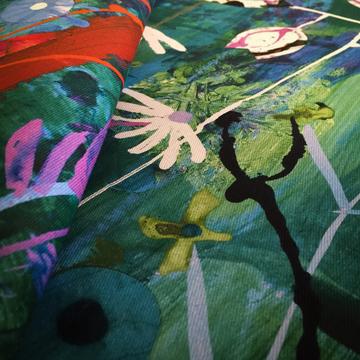Sturdy and durable 100% cotton fabric.
Our cotton drill has a diagonal weave, similar to twill, but the fibres are woven tighter giving it sturdier feel. This makes it suitable for a wide range of uses such as homeware, soft furnishings and apparel. It is particularly popular for kitchenware such as aprons.
The base colour is optic white and heavily processed to provide an excellent print surface. The weight and weave of the fabric means that colour reproduction is incredibly strong. Our cotton drill is printed using eco-friendly water based pigment inks which are inherently UV resistant.
All our cotton fabrics have been pre-treated to offer excellent wash fastness and durability.







